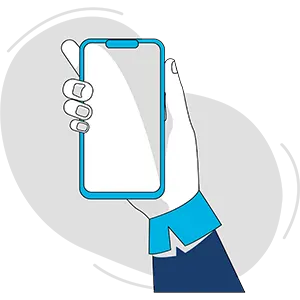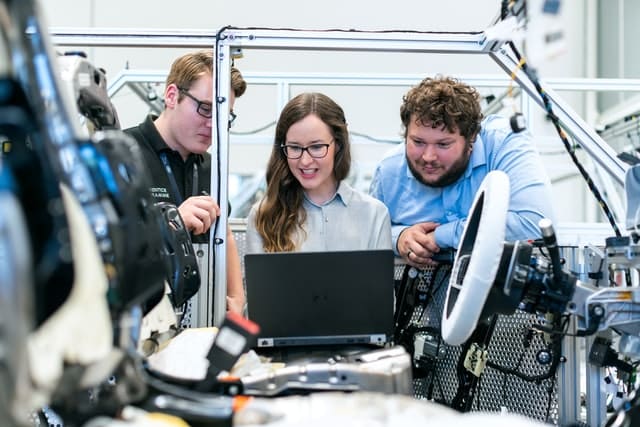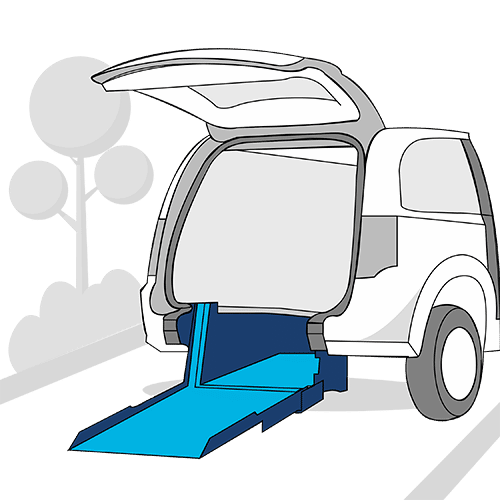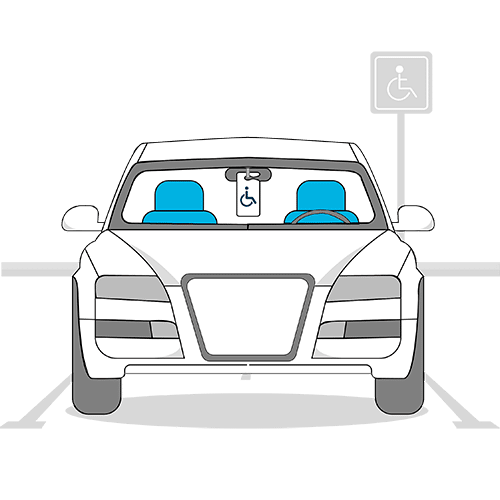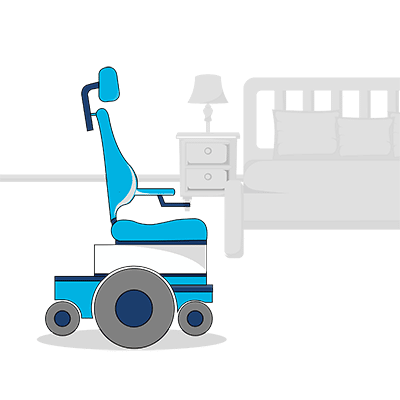Disability driving aids make driving and getting your licence to drive with disability possible, safe and comfortable. It’s crucial to be able to transfer driving functions for the feet – like acceleration and braking – to your hands if you can’t use your feet.
For example, if a person has a spinal cord injury that causes paralysis in the legs, driving is still possible. But there are so many options available for new driving controls and of course, they cost a lot. Not all disability driving aids are a suitable match with every car either.
As a person driving with disability, it’s important to consult a driver trained occupational therapist to help you make the right choices. But how do they make the right choices and how do they stay up to date with the latest driving technology? Let’s find out.
Disability driving aids – always improving
Car modifications for drivers with disability are constantly being developed and improved. New models of wheelchair accessible vehicles and modifications are often available. So how does a driver trained occupational therapist (DTOT) stay up to date with all the technology that’s on offer?
To understand the situation better, Blue Badge Insurance spoke to Nicole Young. She’s a very experienced driver trained occupational therapist with ATZ Driving Solutions. Read our interview to find out more.
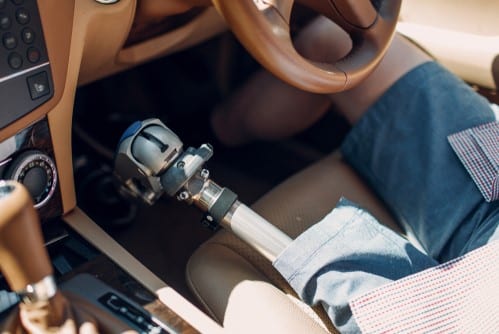
How does a DTOT keep up with the latest disability driving aids?
Nicole says that it’s up to the individual occupational therapist to maintain their knowledge about new car modifications and assistive technology.
“Within my role as a driver trained OT, I feel that to maintain my currency of practice position as an expert in driver training, it’s on me to be up to date with what’s going on. Manufacturers tend to bring out a new model every 12 to 18 months. That means not every vehicle and modification are suitable for each other. You can’t simply treat vehicle modifications as a one size fits all because every year the blueprint of the car changes. Each DTOT needs to know what’s available and where, because it also comes down to where they work and where their clients live.”
A driver trained occupational therapist must be well networked
Staying up to date with the latest disability car modifications is also about having a very good working relationship with the vehicle modifier.
Nicole says, “It’s really important for OTs to have that working relationship. The DTOT understands that there’s a very big difference between a vehicle engineer and a vehicle installer.
A vehicle installer can get an off-the-shelf product and install it in the car. Whereas, a vehicle engineer can do the certification of compliance according to the Australian guidelines. They also know how to take a modification and customize it to the person’s individual needs. That means the vehicle engineer can factor in more about the functional needs of the person.
They must also stay on top of technology
As Nicole notes, “There is a lot of changing technology. There’s also been a big increase in how much technology is available.
When I started working as a DTOT some 18 years ago, for example, it was quite standard to prescribe mechanical hand controls. But I haven’t prescribed mechanical hand controls for about 11 years because they require you to override a safety feature on the car. There are new modifications available nowadays that mean you don’t have to do that.”

Choosing the right disability driving aids
It’s a great thing that there are so many disability driving aids available. But with so much technology to choose from, being a buyer can be confusing.
As Nicole explains: “You jump online and Google all sorts of vehicle modifications. For example, you can look into Tesla self-drives, duck clutches, ghost rings, satellite accelerators, space drive, and all sorts of different options. Whereas I tend not to do that because the disability driving assessment process helps me pinpoint what modifications a person is going to need. Because it’s all good to have seen that someone’s driving their Ford Ranger with a satellite accelerator on Facebook and say, well, that’s what I want. But you need to get what’s right for you, the individual.
Then you often also need to go and get a funding body to pay for it. But if you’ve never used the modification you can’t be funded. Additionally, unless you’re going to pay for that installation up front, you need to test drive a car that already has those modifications, to learn the competencies and do the disability test.
As a DTOT I already know where the driving instructors with modified cars are and who the closest instructor is. I also know what modifications they’ve got in each car. So I can then tap into that network when I’m doing that prescription.”

Choosing the right OT driving assessment expert
Read our article about what to expect in the fitness to drive occupational therapy driving assessment. This should help you get the right modifications and licence endorsements.
Nicole says, “I think there are so many myths about the occupational therapy fitness to drive assessment. And I think it’s really difficult for consumers because often these myths are louder than fact. Unfortunately there are also so many non-driver trained occupational therapists who feel that they can do this job and who feel that they can provide advice. So consumers often get misled.
For example, I couldn’t tell you how many referrals I’ve had just in the last six months where generalist occupational therapists have provided advice on what sort of vehicle the client should buy and what sort of modifications they should get – without taking into account any of the variables that they’re not aware of.”
People have come to me because they’ve now spent quite literally thousands of dollars. And I have to tell them, ‘I’m sorry, but you bought the wrong car’. Or ‘I’m sorry, but those modifications aren’t suitable’. Or ‘those modifications aren’t endorsed.”
How is a driver trained occupational therapist different to a normal occupational therapist?
A general occupational therapist may decide to offer driver trained services. But ideally they shouldn’t as they won’t have had appropriate specialist experience. This can lead to clients spending lots of money on the wrong vehicle or driving aids.
If you need an occupational therapy driving assessment, make sure you know the difference between a driver trained occupational therapist and a general occupational therapist.
Even once you know the difference, finding the right driver trained OT may feel a bit daunting. Not everyone’s disability is the same. A driver trained occupational therapist needs unique expertise around the individual’s disabilities and also around the latest in driving modifications.

Finding a driver trained occupational therapist so you get the correct disability driving aids
Finding a good driver trained occupational therapist is important because they’ll make sure you get the correct disability driving aids. There are several ways to find a driver trained occupational therapist that depend on where you live.
Nicole explains: “In Australia, there is a bit of inconsistency because it comes back to the jurisdiction you live in. If you live in Victoria, for example, you could go to TAC (Transport Accident Commission) for a list of all their driver trained therapists. In New South Wales, you can contact the occupational therapy association and they also have a list on their website. There’s also a New South Wales driving OT group. The NDIS site also lists a service provider directory.
So there are quite a lot of different angles you can take to find a driver trained OT. But there’s no prescribed ideal. You should look to the state based OT association where you live to get the fullest list of driver trained occupational therapists. Then I think on the ground a lot of people go to vehicle engineers or suppliers and say, ‘I’d like to buy these modifications or have them installed’. Then the engineer will say, ‘oh, well, have you had it endorsed on your license’? If the answer is no the engineer will let them know they need to do a disability driving assessment and refer them to a DTOT. And we also get a lot of GP referrals.”
Installing disability driving aids
When it comes to installation, there’s a lot of conflicting information on modification and conversion that can also be confusing. The DTOT is able to oversee this process with prior experience and knowledge of Australian legislation.
When people try to find out what they need to know about buying, choosing and installing vehicle modifications on Google, they often get American information. Nicole says people with driving mobility issues need to know American legislation is vastly different to Australian legislature.
That’s why it’s important to pick the right DTOT for the disability driving assessment. A DTOT arranges for you the client to work with a driving instructor and trial modifications before scripting vehicle modifications.
Not only are the modifications costly but they also must comply with driving and vehicle modification laws. Why? Because there are potential legal ramifications for both the driver and the OT if the wrong modifications get installed.
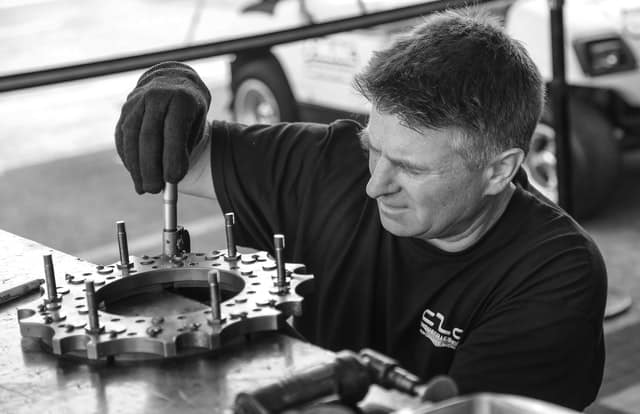
Occupational therapy courses and credentials
In Australia, possession of specialist postgraduate training in a driver assessment and rehabilitation course is a mandatory requirement for an occupational therapist to practice as a driving assessor.
Wherever you are in Australia, you need to have had some form of specialist postgrad training to become a DTOT. However, the rules for what the postgrad training comprises aren’t yet standardised.
Nicole states, “An occupational therapist who specializes in driver assessment and rehabilitation can conduct an occupational therapy driver assessment for individuals with a disability health condition or decline. They can design a rehab program that supports driving, community mobility, rehabilitation, or return to driving.
These programs should be designed in line with best practice evidence. Clinical reasoning must be goal focused and use appropriate outcome measures in line with competency standards.”
Driver trained OTs are recognised as an expert scope by the OT Association, but not with AHPRA. The AHPRA is the Australian registration body for practicing occupational therapists. However, it doesn’t currently have a credentialing process specific to driver trained OTs.
“I think that’s also why you end up with so many consumers who inadvertently go and see a general OT,” says Nicole.

How do you ensure you provide the best possible value to clients?
Nicole outlines several ways that she offers clients the best value for their investment:
Communication
“I think it’s about being clear with your communication upfront. Then the client is informed of the process and then know and understand what to expect. I have a set price for clients that is essentially an itemized quote. This helps clients know what they’re getting for that investment.”
Core expertise
“I think providing the most value to clients also comes back to the point of actually accepting the referral. For example, a few years ago I wouldn’t have accepted a referral if the person had to drive from wheelchair because I just felt it was outside of my comfort zone. And I felt that I would have to spend too long researching all the variables to give the client the best information at the time.”
Time spent
“So for me personally, it’s about being aware of what your limitations are and being aware of what you can offer. And I know for myself, that it’s about not taking on referrals for the sake of the dollar factor. Sometimes when working with a client I stop accepting new referrals for a while. I do this just so I can make sure that client is supported through the process because it is quite a long process.
It’s not just a ‘see the OT in the morning and by lunchtime everything is sorted’ situation. There are lots of moving parts that need to be monitored. And there is so much inconsistency and so much confusion… So it’s about being able to support that person through the process properly to give them better value for their investment.”

Compatibility
“Making sure that I’m compatible with a client just as much as they feel compatible with me is important too. And if, for instance, they have a specific need that I don’t want to take on a referral for because it doesn’t fit into my scope then I try to refer them to an OT who specialises in that area.”
Sharing my network
“I’m NDIS registered and I’m registered with RMS for OT Driver Assessments. In addition to the C class, I also do heavy vehicle assessments. If someone contacts me for my services but they’re located far away, I say, ‘look, I can send you this list of all of the other OTs in the area so that you can ring around’. They may decide to go elsewhere and that’s totally fine.
What’s important is that a potential client can contact you and you might be the person to help them. But if not, you are also going to be the likeliest person to know who is best to help them. So a referral from a DTOT is also a very good option for getting the right fit.”
Insurance for cars and disability driving aids
Once you’ve worked with a DTOT to get the correct car and disability driving aids, you won’t want to be without it for longer than necessary. That’s why disability car insurance can be so valuable. If your car or disability driving aids are damaged, broken or even stolen you might not be able to afford to replace them. Your car insurance can help you pay for the costs of replacement or repair.
Nicole says about us:
“I think Blue Badge Insurance is a bit unique. They’ve done a bit more research into the actual risks of driving with a disability and trust their clients. Blue Badge Insurance, from my experience, has more of an idea about what’s involved with modifications and what’s involved with replacing modifications. And I think that they have a better understanding of compliance certifications.”
You’ll be happy to know we offer up to 25% off insurance for drivers with a disability parking permit. Find out about our car insurance for wheelchair accessible vehicles and disability converted cars. Or, our disability car insurance. Then click below to get a quote.

